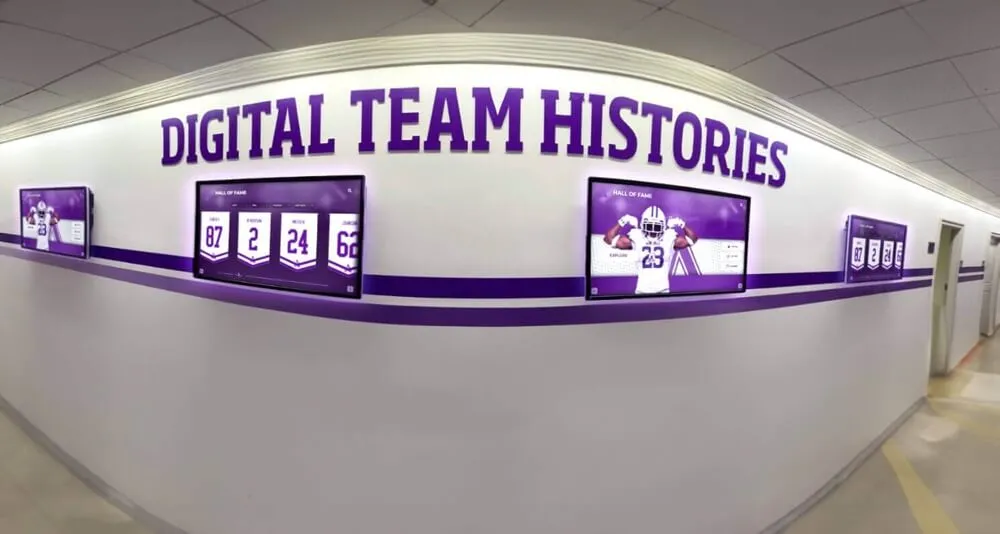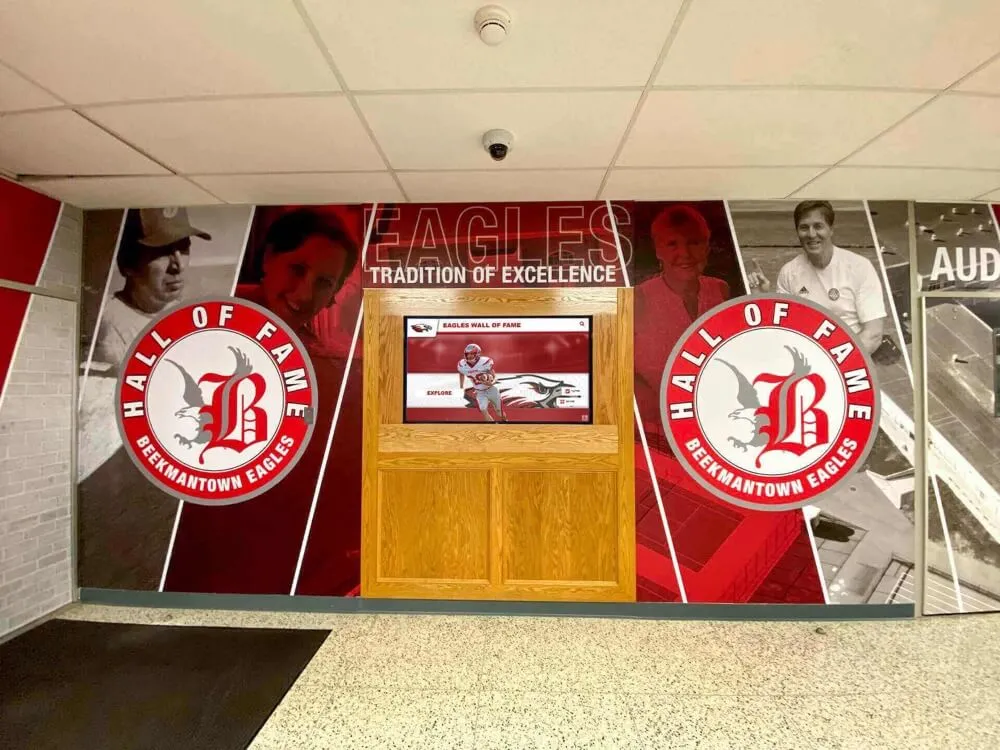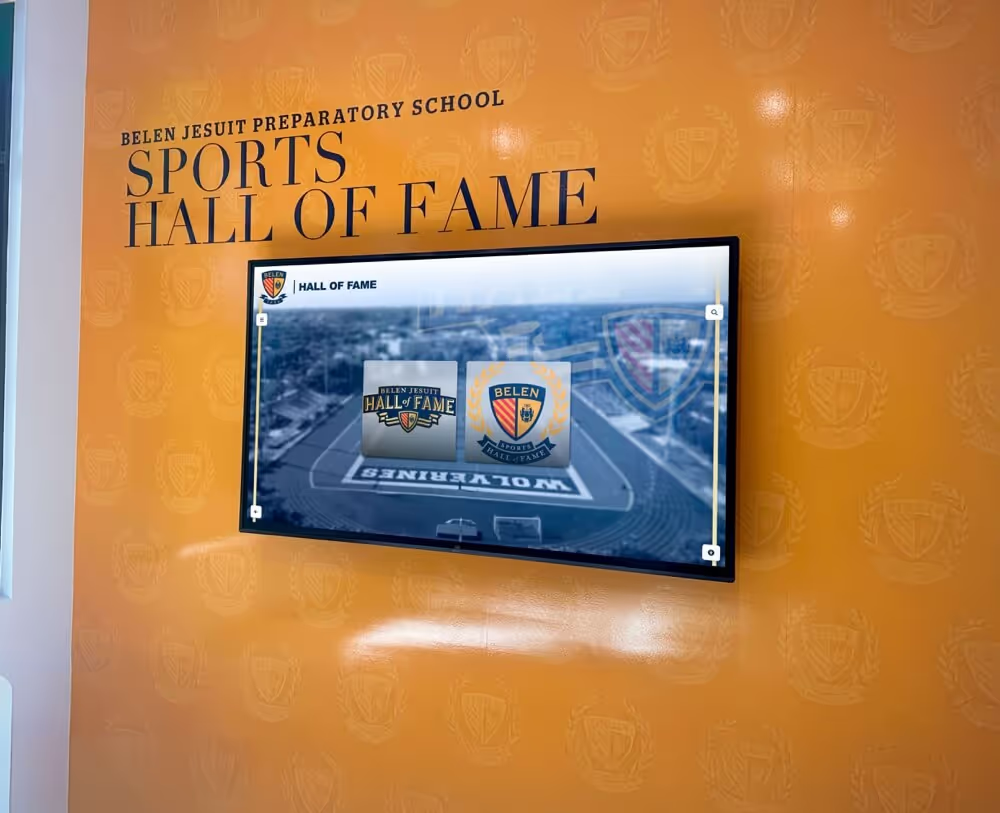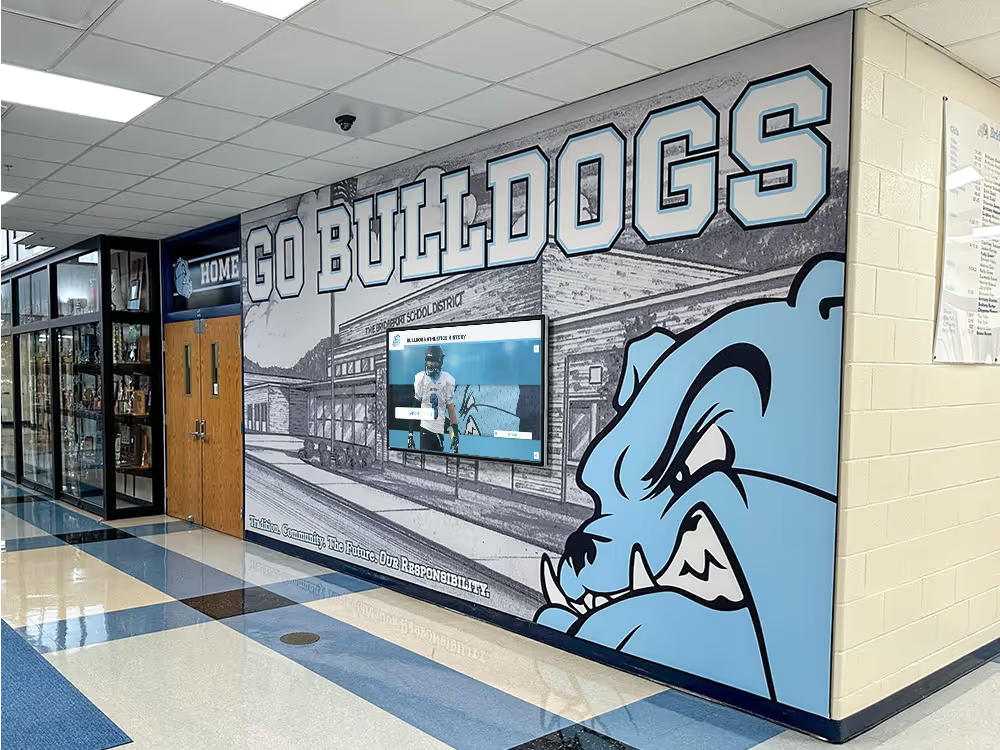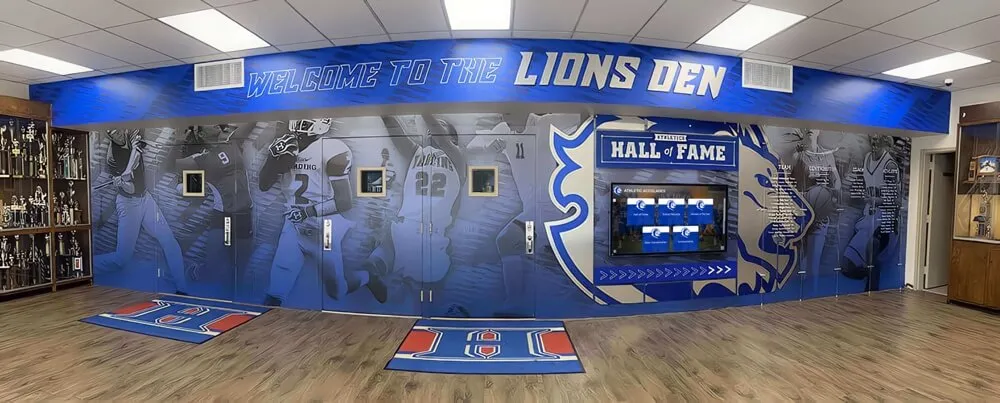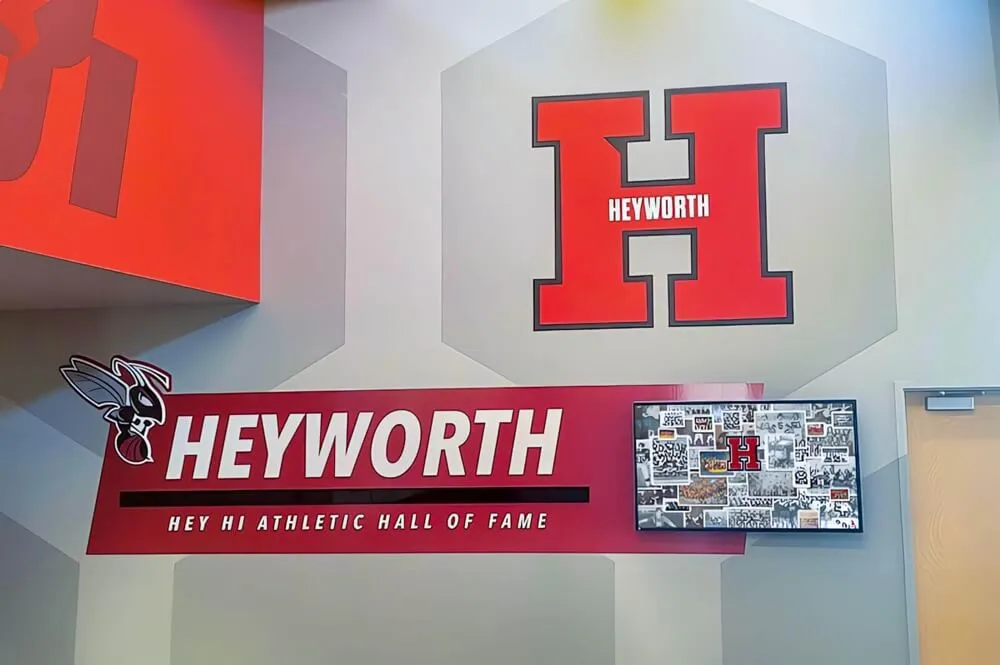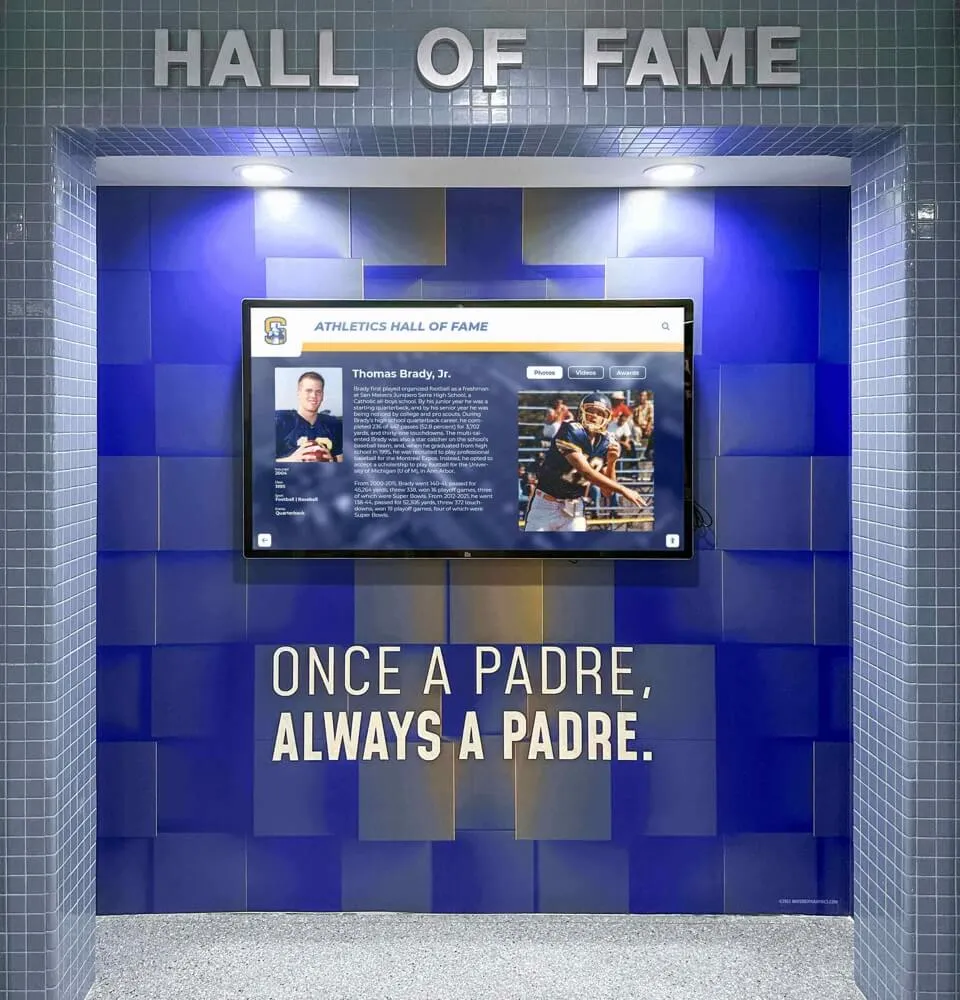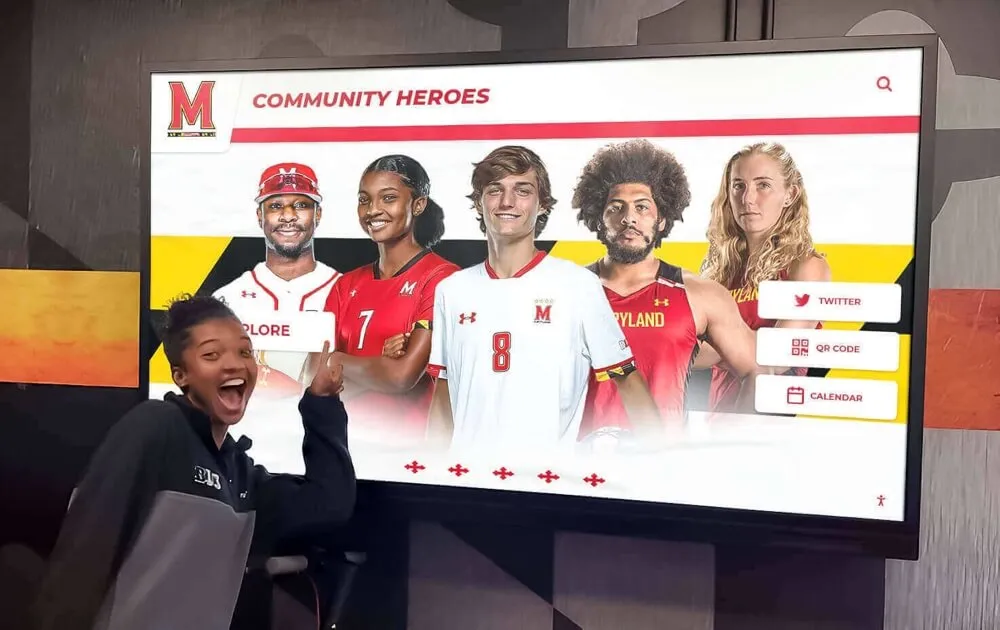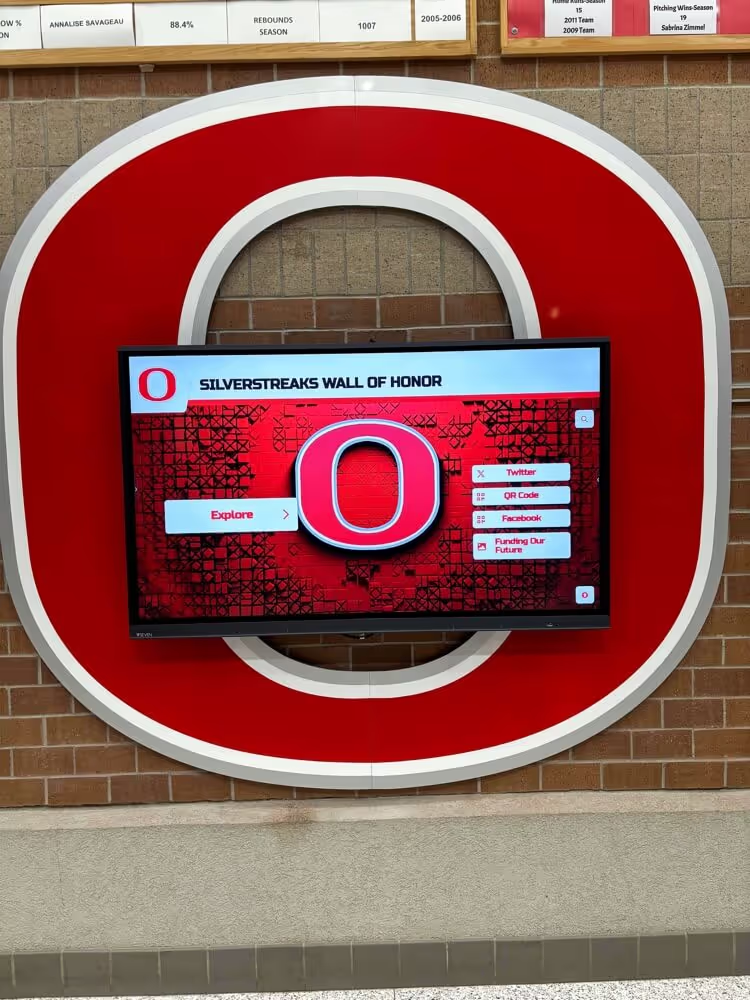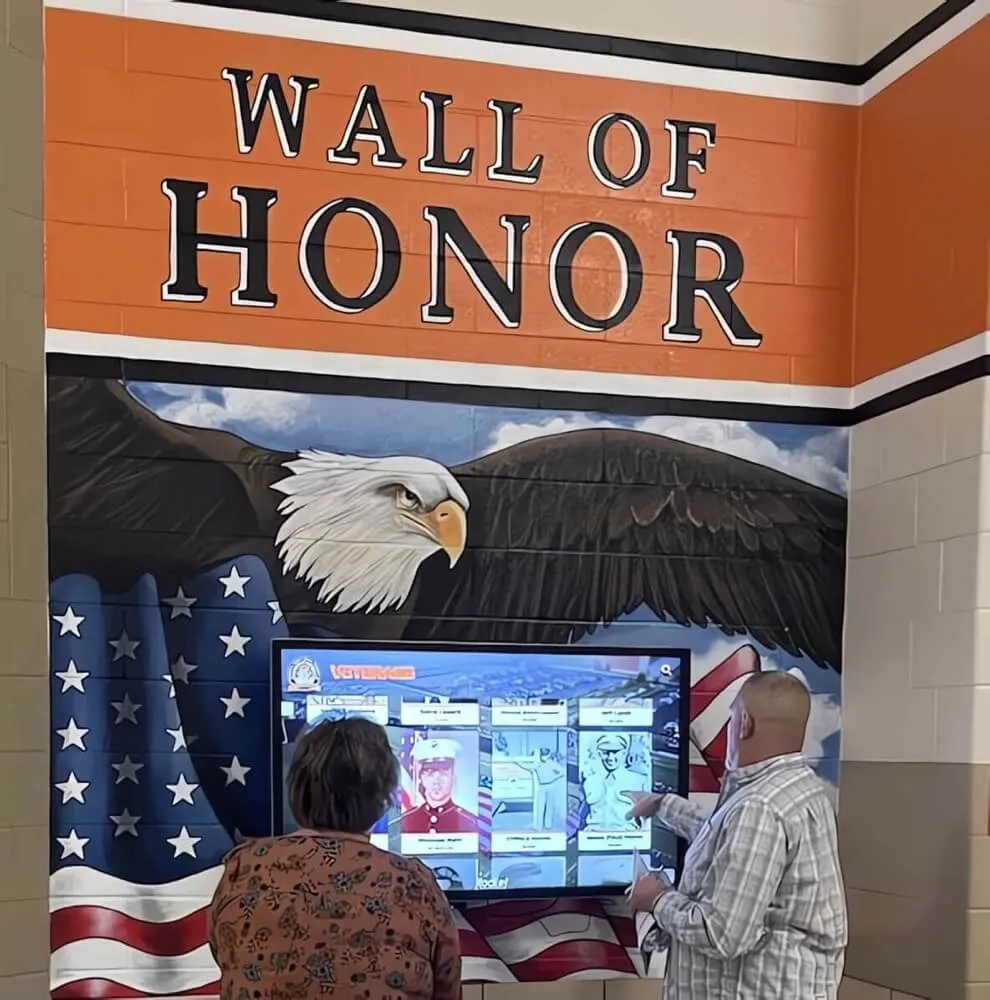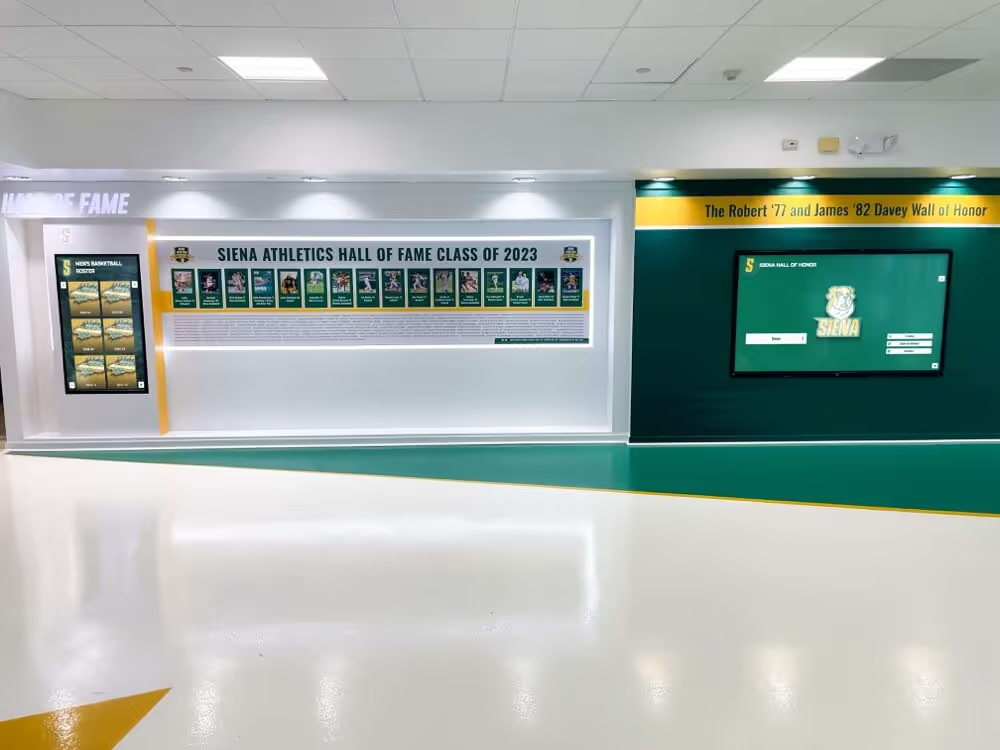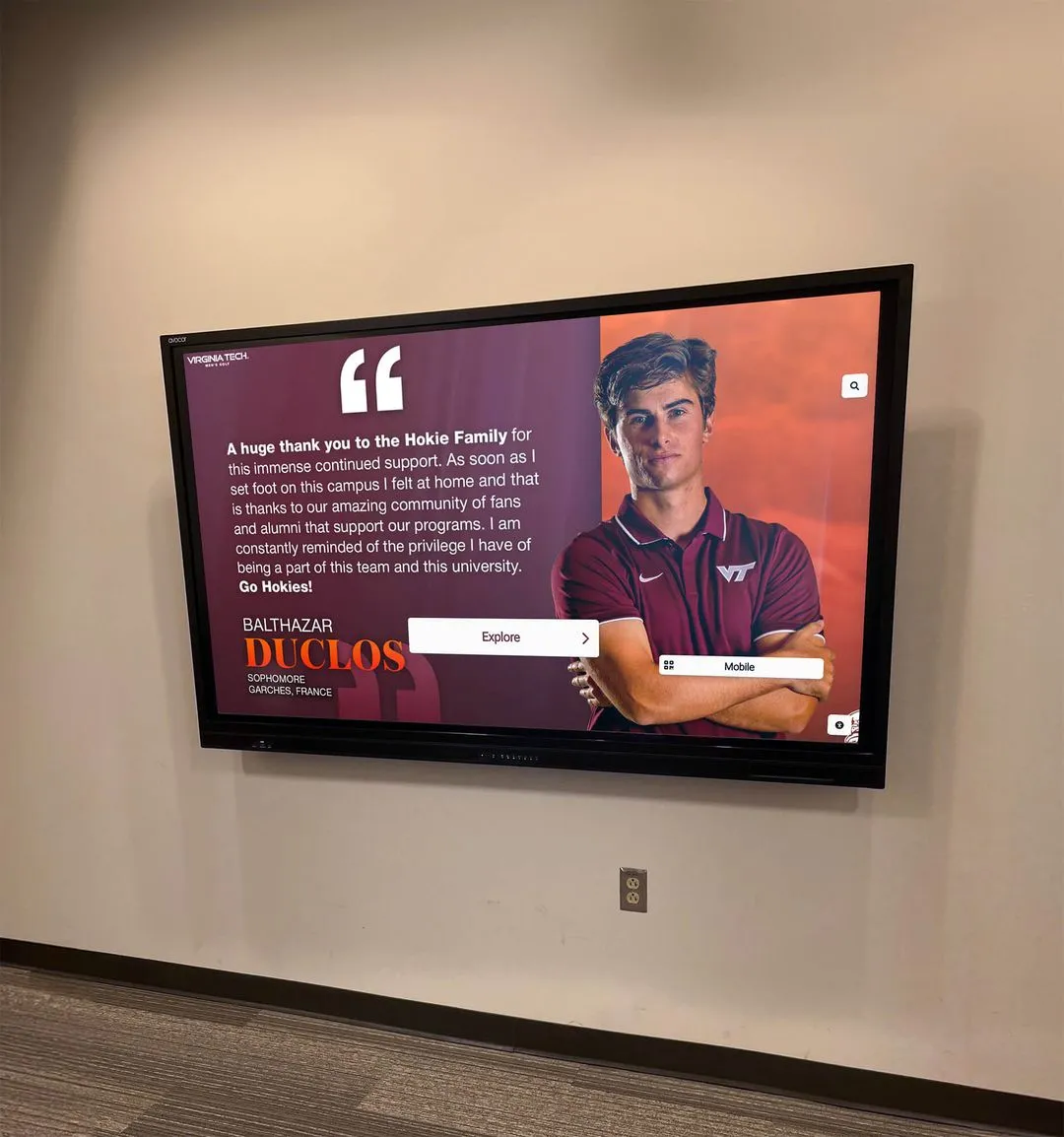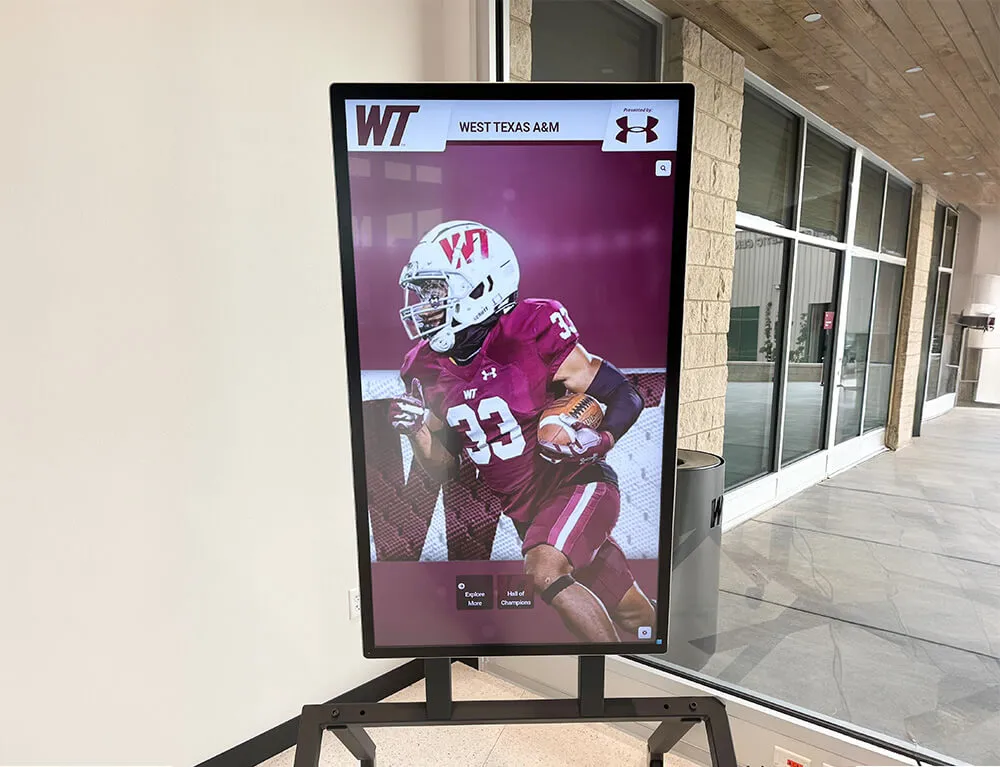Table of Contents
- Understanding Athletic Record Board Options
- Traditional Record Board Systems Overview
- Digital and Easy Change Record Board Advantages
- Cost Analysis and ROI Comparison
- Maintenance and Update Requirements
- Making the Right Choice for Your Program
Understanding Athletic Record Board Options
Athletic programs face critical decisions when selecting record board systems that balance recognition needs, budget constraints, and operational efficiency. Modern options range from traditional slide-in and laid-vinyl boards to innovative digital and easy change systems that revolutionize how schools celebrate athletic achievements.
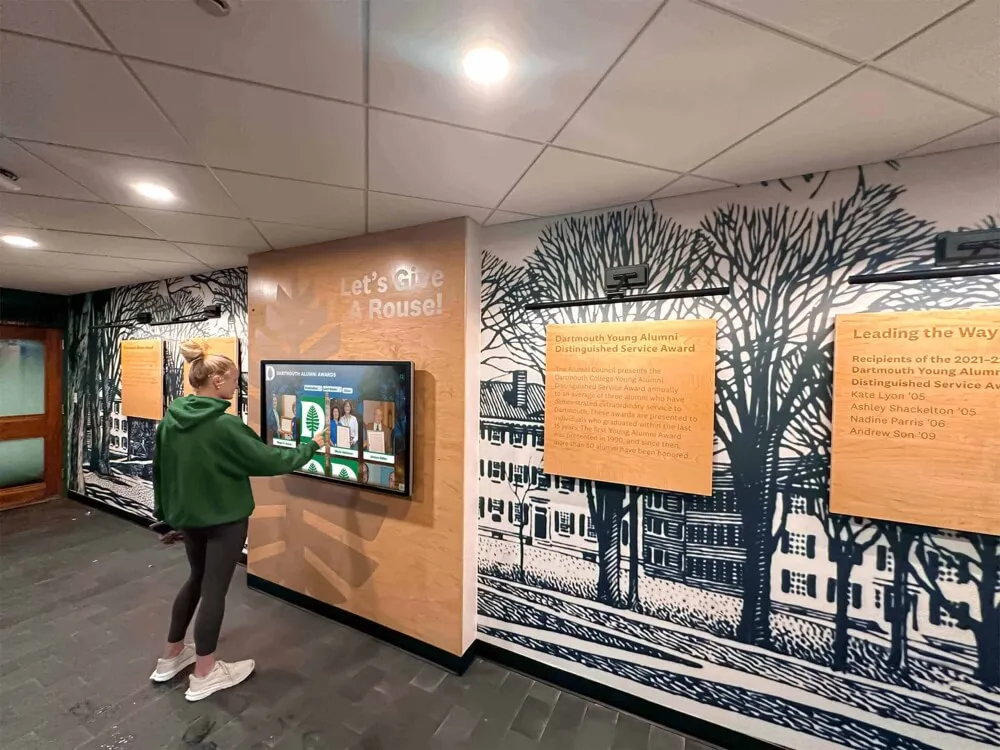
Modern athletic facilities benefit from advanced record board systems that combine professional appearance with operational efficiency
The evolution of athletic record boards reflects changing institutional needs for flexibility, cost-effectiveness, and professional presentation. While companies offer traditional slide-in and laid-vinyl options, innovative solutions from Rocket Alumni Solutions provide digital and easy change alternatives that address the limitations of conventional systems.
The Evolution of Athletic Recognition
Athletic record boards have transformed from static displays requiring professional updates to dynamic systems that empower schools to manage their own recognition programs:
- 📋Traditional Era (Pre-2000s)
Permanent engravings and painted boards requiring complete replacement for updates.
- 🔄Modular Systems (2000s-2010s)
Introduction of slide-in, laid-vinyl, and velcro panel systems allowing component updates.
- 💡Digital Revolution (2010s-Present)
Smart systems combining physical displays with digital capabilities and instant updates.
Key Decision Factors
When comparing record board options, athletic departments must consider multiple factors that impact long-term satisfaction and value:
Operational Factors
- Update Frequency: How often records change and need updating
- Staff Capabilities: Internal ability to manage updates vs. external dependencies
- Response Time: Speed required from achievement to recognition
- Accuracy Requirements: Need for immediate corrections and adjustments
Strategic Considerations
- Budget Constraints: Initial investment vs. ongoing operational costs
- Program Growth: Scalability and expansion capabilities
- Facility Integration: Compatibility with existing spaces and infrastructure
- Technology Adoption: Readiness for digital integration and future capabilities
Traditional Record Board Systems Overview
Traditional record board systems including slide-in, laid-vinyl, and velcro panel options have served athletic programs for decades. Understanding their characteristics, limitations, and operational requirements helps programs make informed decisions about recognition solutions.
Slide-In Record Boards

Slide-in record boards offer modular updates but require precise component manufacturing and professional services
Slide-in record boards represent one of the most common traditional systems, featuring slots behind acrylic faces where record strips slide in and out:
- Design Characteristics
Aluminum frames with acrylic face panels and precision-cut slots for record strips - Update Process
Requires ordering custom strips from manufacturer with specific dimensions and formatting - Typical Costs
Initial investment $2,000-5,000 plus $50-150 per record strip update - Limitations
2-4 week lead time for updates, vendor dependency, limited design flexibility
Laid-Vinyl Record Boards
Laid-vinyl record boards use adhesive-backed vinyl strips applied directly over existing records:
Laid-Vinyl System Characteristics
Installation Method
- Direct application to board surface
- Layering of new records over old
- Professional alignment required
- Permanent adhesive backing
Advantages
- Lower initial cost
- Weather-resistant options
- Simple update concept
- Suitable for outdoor use
Disadvantages
- Visible layering over time
- Difficult error correction
- Professional installation needed
- Limited reusability
Velcro Panel Record Boards
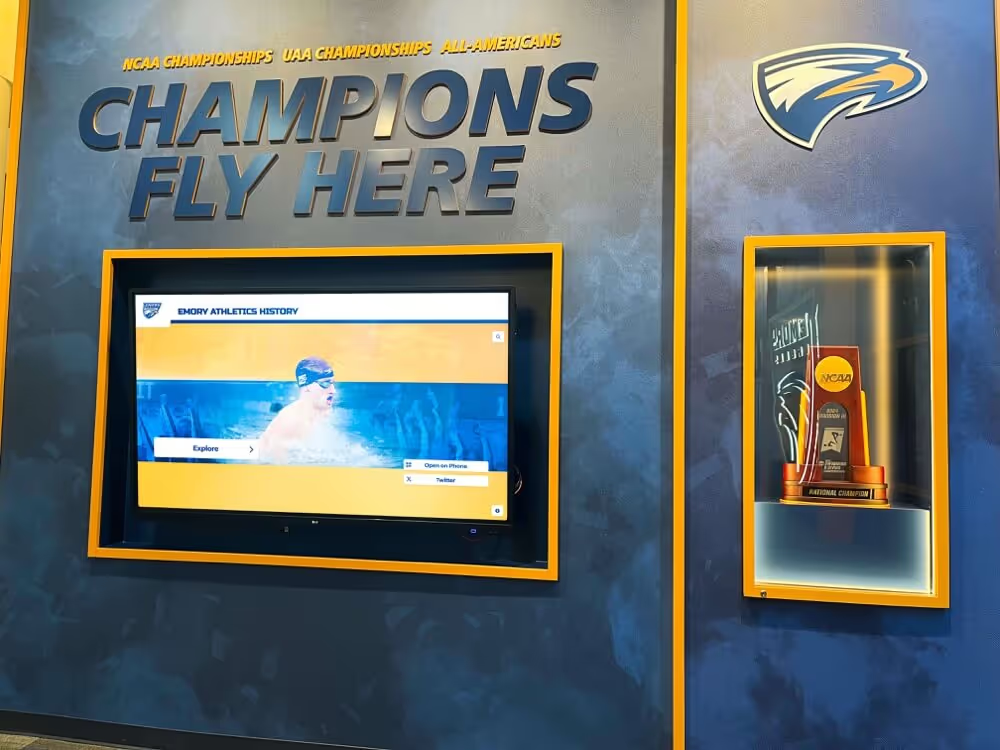
Velcro panel systems accommodate large format displays but require significant space and professional updates
Velcro panel record boards utilize industrial-grade fasteners for large format displays:
System Specifications
- Size Range: Typically 8'x8' to 25'x10' or larger
- Viewing Distance: Designed for 25+ feet optimal viewing
- Panel Materials: Heavy-duty substrates with weather-resistant graphics
- Mounting System: Industrial velcro or magnetic attachment systems
Operational Challenges
- Update Complexity: Large panels require multiple people for safe handling
- Storage Requirements: Significant space needed for replacement panels
- Cost Per Update: $200-500+ for large format panel production
- Installation Risk: Potential for damage during panel changes
Digital and Easy Change Record Board Advantages
Modern digital record boards and easy change systems from providers like [Rocket Alumni Solutions](https://digitalrecordboard.com) address the limitations of traditional systems while providing enhanced capabilities that transform athletic recognition programs.
Digital Record Board Innovation

Digital record boards combine touchscreen interactivity with instant updates and multimedia capabilities
Digital record boards revolutionize athletic recognition through advanced technology and user-friendly management:
- Instant Updates: Records updated in real-time through web-based content management systems
- Multimedia Integration: Photos, videos, and animations enhance recognition impact
- Remote Management: Updates from any device without physical board access
- Interactive Features: Touch-enabled exploration of records, statistics, and athlete profiles
Easy Change Record Board Benefits
Easy change record boards bridge the gap between traditional and digital systems:
Update Simplicity
Staff-managed updates without vendor dependency or special tools.
- In-house control
- Immediate updates
- Error correction ease
- No waiting periods
Cost Efficiency
Eliminated vendor fees and reduced long-term operational costs.
- No per-update charges
- Reduced labor costs
- Predictable budgets
- Higher ROI
Professional Quality
Maintains traditional appearance with modern convenience.
- Premium materials
- Custom branding
- Consistent formatting
- Lasting durability
Technology Integration Features
Modern digital and easy change record boards incorporate advanced features impossible with traditional systems:
- QR Code Integration Link physical displays to digital content for expanded information access
- Cloud Synchronization Automatic backup and multi-location display coordination
- Analytics Tracking Engagement metrics and content performance monitoring
- Social Media Integration Automatic sharing of new records and achievements
- Mobile Accessibility Smartphone access to complete record information
- Automated Updates Integration with timing systems and score databases
Cost Analysis and ROI Comparison
Understanding the true cost of record board systems requires comprehensive analysis beyond initial purchase price. Total cost of ownership includes installation, updates, maintenance, and operational efficiency impacts.
Comprehensive Cost Breakdown
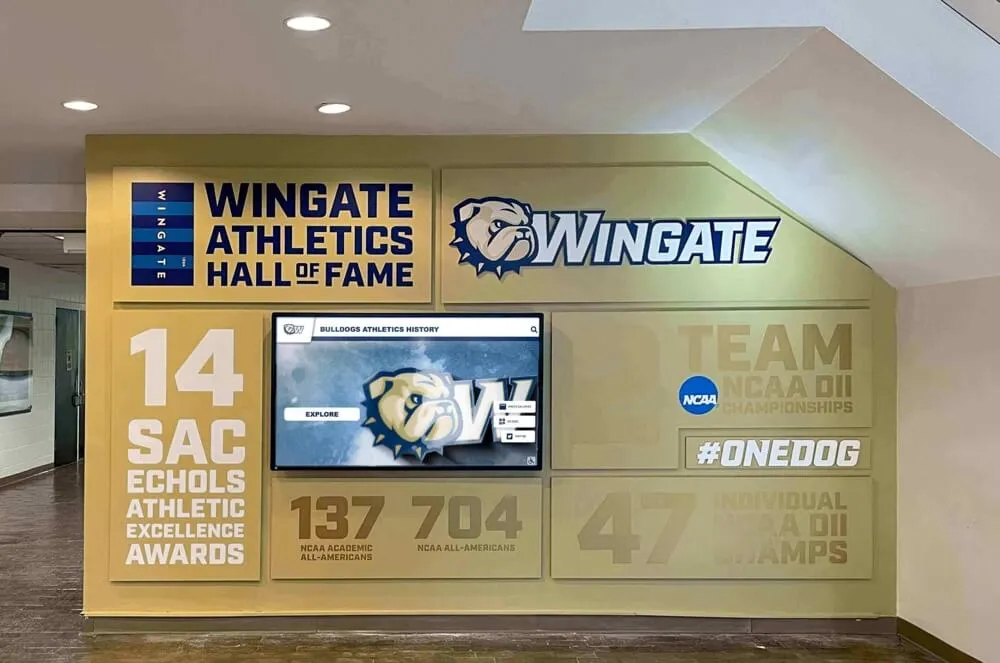
Long-term cost analysis reveals significant savings with modern record board systems
5-Year Total Cost of Ownership Comparison
Slide-In Boards
- Initial: $3,500
- Updates/yr: $1,500
- Maintenance: $500
- 5-yr labor: $2,500
- Total: $14,500
Laid-Vinyl
- Initial: $2,500
- Updates/yr: $2,000
- Refinishing: $1,000
- 5-yr labor: $3,000
- Total: $16,500
Easy Change
- Initial: $4,500
- Materials/yr: $300
- Maintenance: $200
- 5-yr labor: $500
- Total: $7,500
Digital System
- Initial: $12,000
- Software/yr: $600
- Maintenance: $400
- 5-yr labor: $0
- Total: $16,000
Hidden Cost Factors
Traditional record board systems often include hidden costs not apparent in initial quotes:
Traditional System Hidden Costs
- Rush Fees: $100-300 for expedited record updates
- Design Changes: $200-500 for format modifications
- Shipping Costs: $50-150 per update shipment
- Installation Labor: $100-300 per update session
- Error Corrections: Full cost for replacement components
- Downtime Impact: Lost recognition opportunities
Modern System Savings
- Eliminated Vendor Fees: 100% reduction in per-update costs
- Reduced Labor: 90% decrease in update time requirements
- No Shipping: All updates handled on-site
- Instant Corrections: Zero cost for fixing errors
- Enhanced Efficiency: Staff time redirected to value activities
- Improved Morale: Immediate athlete recognition
Maintenance and Update Requirements
The operational demands of record board maintenance significantly impact program efficiency and staff resources. Understanding these requirements helps athletic departments plan for sustainable recognition programs.
Update Process Comparison
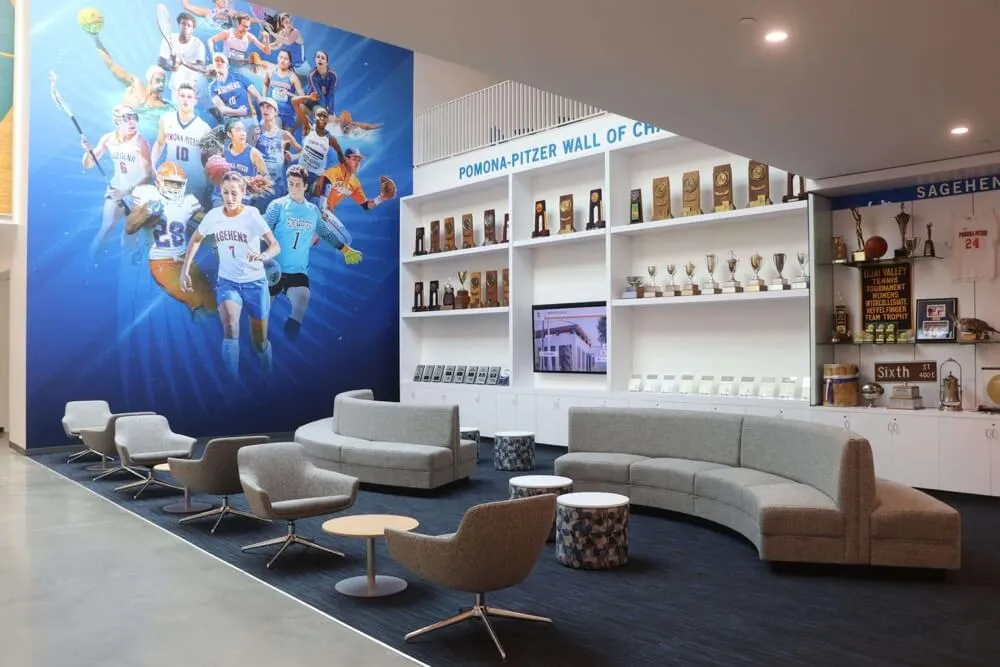
Update complexity varies dramatically between traditional and modern record board systems
Record Update Process Timeline Comparison
| System Type | Order Time | Production | Delivery | Installation | Total Time |
|---|---|---|---|---|---|
| Slide-In | 1-2 days | 5-7 days | 3-5 days | 1 day | 10-15 days |
| Laid-Vinyl | 1-2 days | 7-10 days | 3-5 days | 2-3 days | 13-20 days |
| Easy Change | N/A | In-house | N/A | < 1 hour | < 1 hour |
| Digital | N/A | N/A | N/A | < 5 min | < 5 min |
Maintenance Requirements by System
Different record board systems require varying levels of ongoing maintenance:
- 🔧Traditional Systems Maintenance
Regular cleaning of acrylic faces, track adjustment for slide-in systems, adhesive residue management for vinyl, professional refinishing every 3-5 years.
- 🧹Easy Change Maintenance
Simple surface cleaning, component inspection, modular part replacement as needed, no specialized maintenance requirements.
- 💻Digital System Care
Screen cleaning, software updates, minimal physical maintenance, remote diagnostics and support capabilities.
Making the Right Choice for Your Program
Selecting the optimal record board system requires careful evaluation of program needs, resources, and long-term objectives. Modern solutions from [Rocket Alumni Solutions](https://touchwall.us) provide superior value for most athletic programs.
Decision Framework

Strategic evaluation ensures selection of record board systems that serve programs effectively for years
Use this framework to evaluate record board options for your program:
When to Consider Traditional Systems
- ✓ Extremely limited budget (under $2,000)
- ✓ Very infrequent updates (less than 5 per year)
- ✓ No staff available for any updates
- ✓ Temporary installation requirements
- ✗ Most athletic programs will find limitations frustrating
When Modern Systems Excel
- ✓ Regular record updates throughout seasons
- ✓ Multiple sports programs to manage
- ✓ Desire for immediate recognition
- ✓ Limited staff time for vendor coordination
- ✓ Focus on long-term value and ROI
Recommended Solutions by Program Type
Best Record Board Systems by Athletic Program
Transform Your Athletic Recognition Program
Discover how modern record board systems can revolutionize your athletic recognition while saving time and money. Experience the difference that immediate updates and professional quality make for your program.
The evolution from traditional slide-in, laid-vinyl, and velcro panel record boards to modern digital and easy change systems represents more than technological advancement—it’s a fundamental shift in how athletic programs approach recognition. While traditional options served their purpose historically, modern solutions deliver superior value through operational efficiency, cost savings, and enhanced recognition capabilities.
Athletic departments investing in modern record board systems report improved staff satisfaction, enhanced athlete motivation, and significant long-term savings. The ability to manage recognition internally, update records immediately, and maintain professional quality without vendor dependencies transforms athletic recognition from an administrative burden into a powerful motivational tool.
For additional insights into modern athletic recognition solutions, explore our comprehensive guides to easy change record board benefits and discover professional installation procedures that ensure long-term success.





